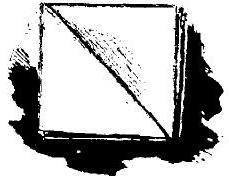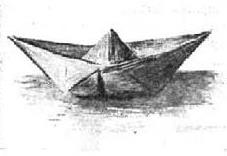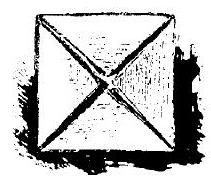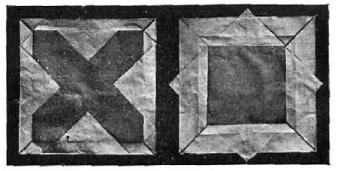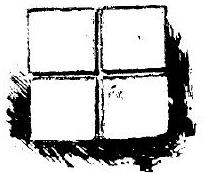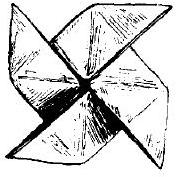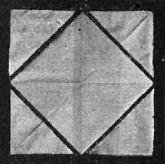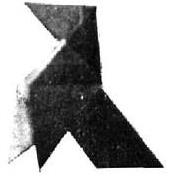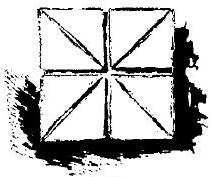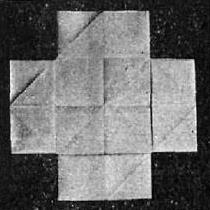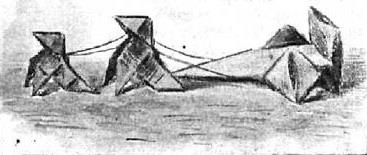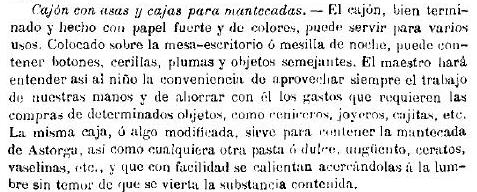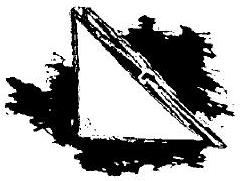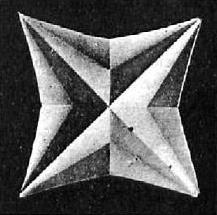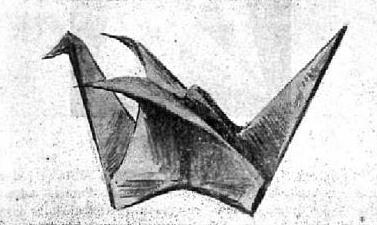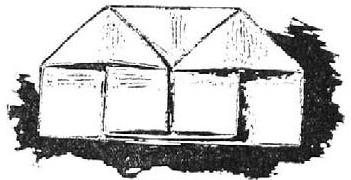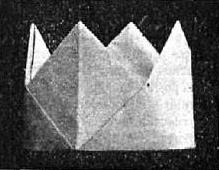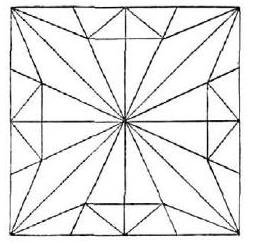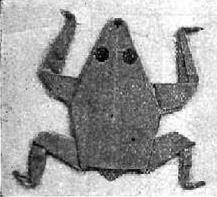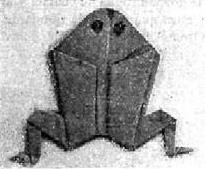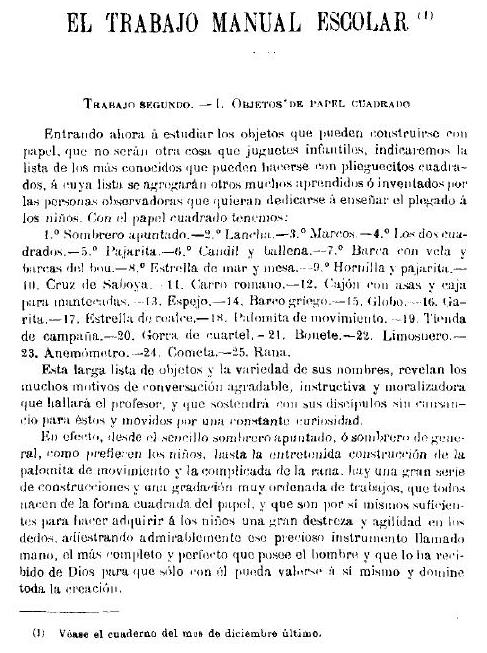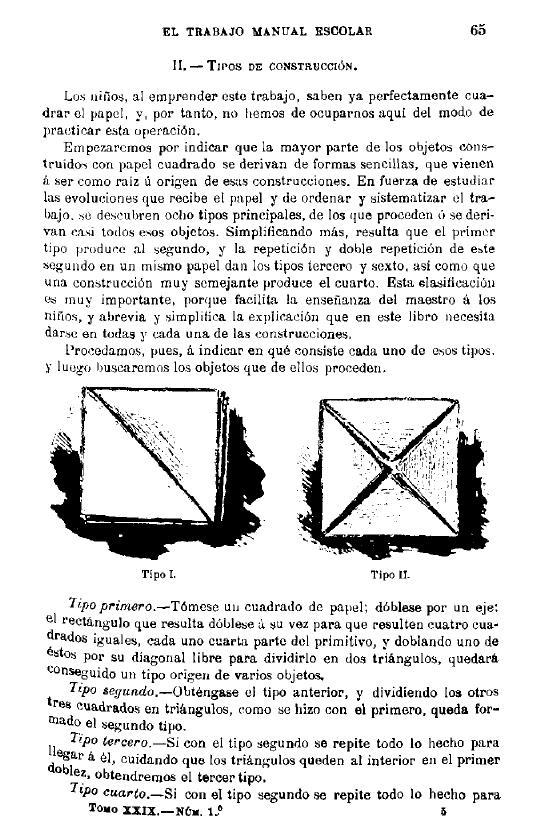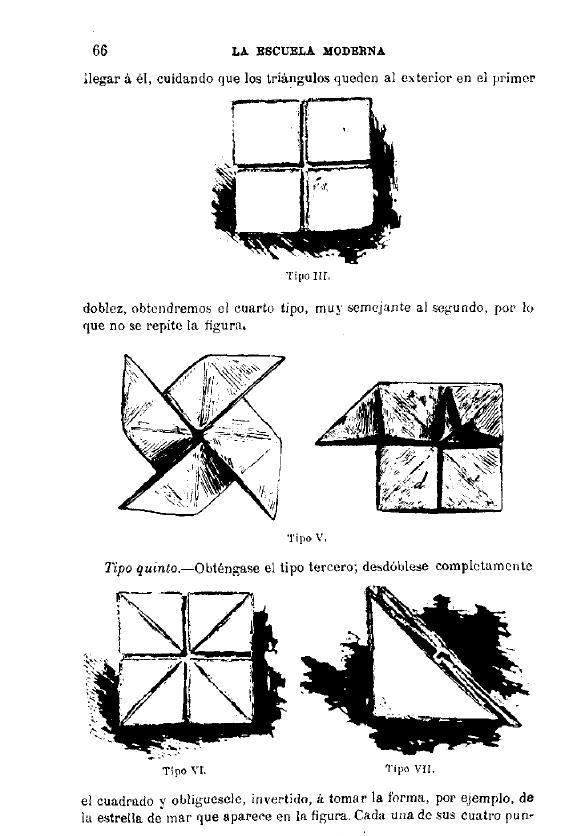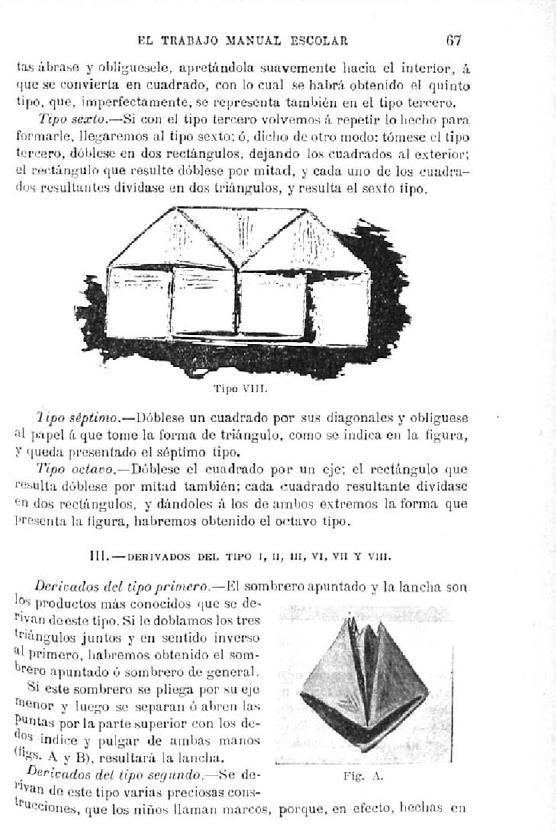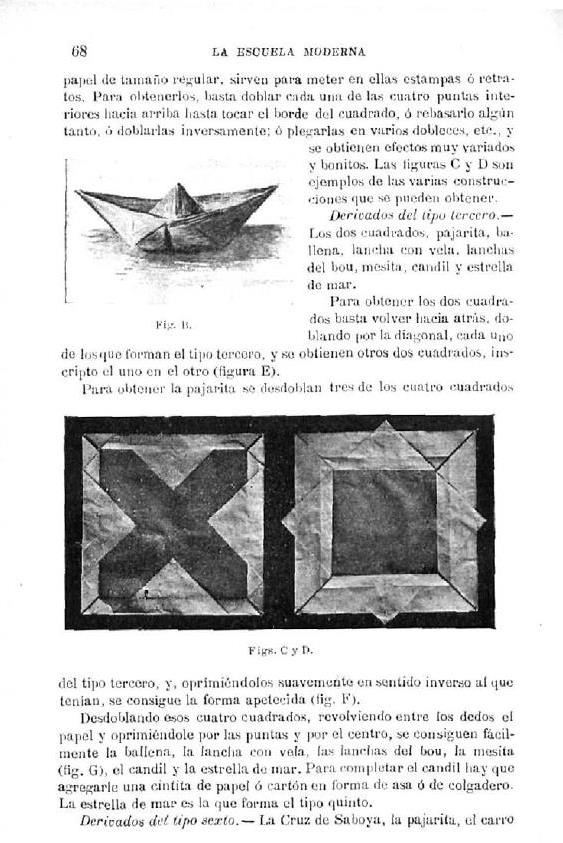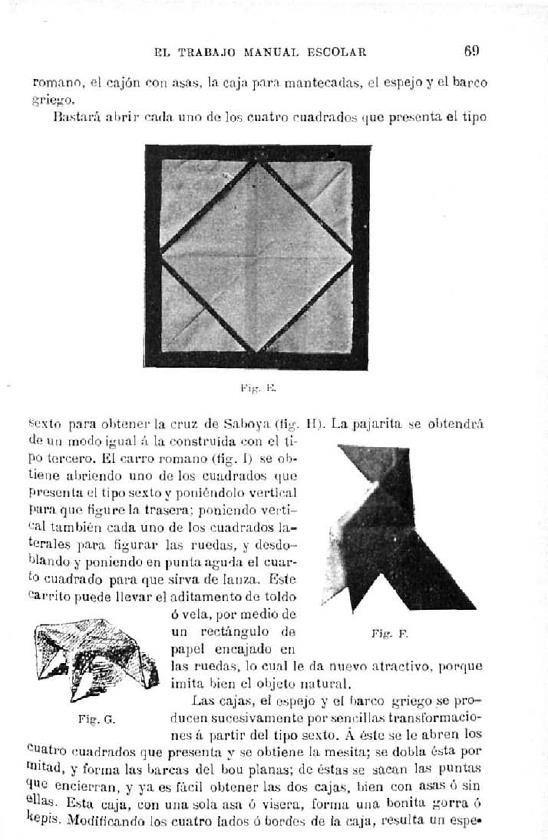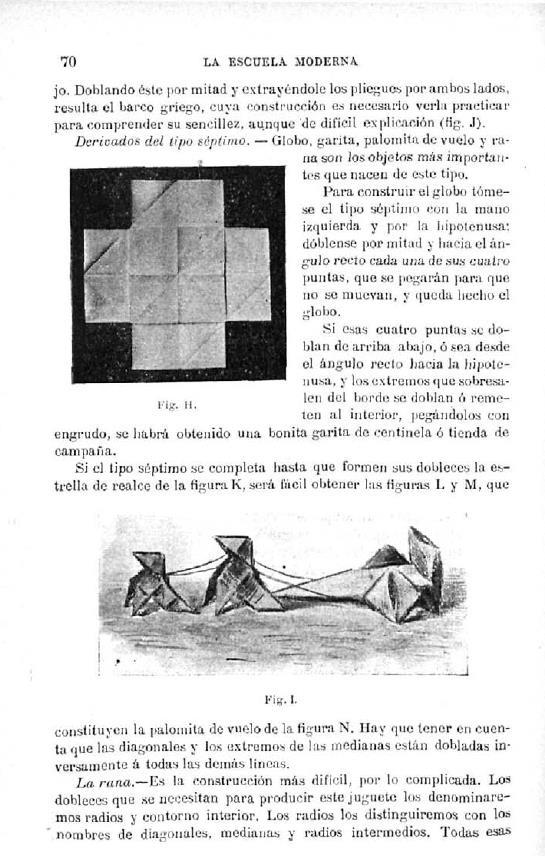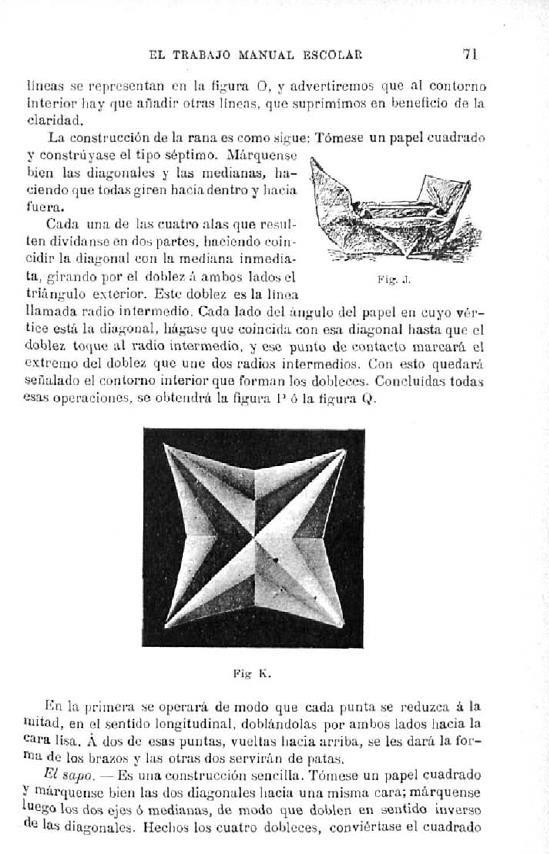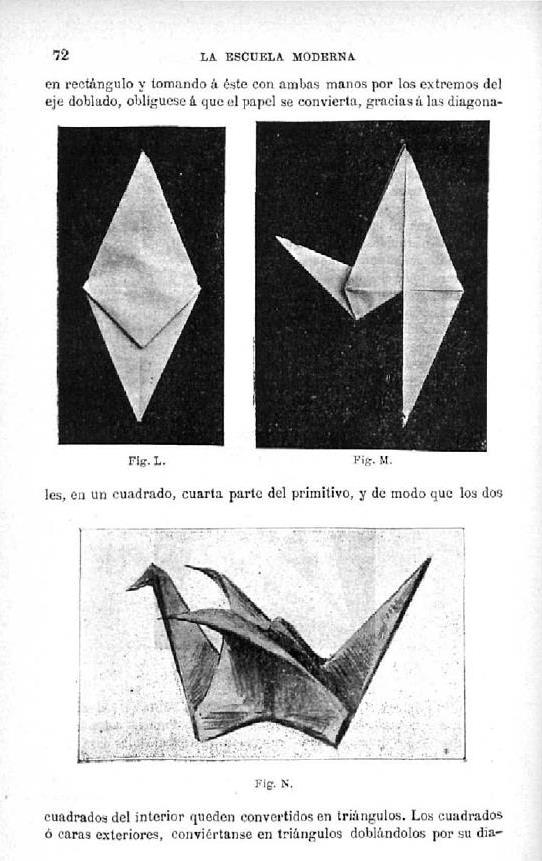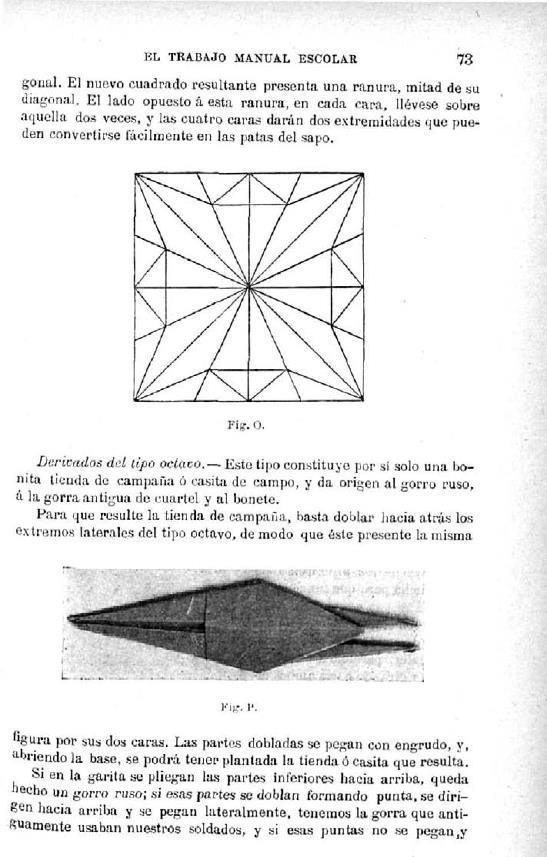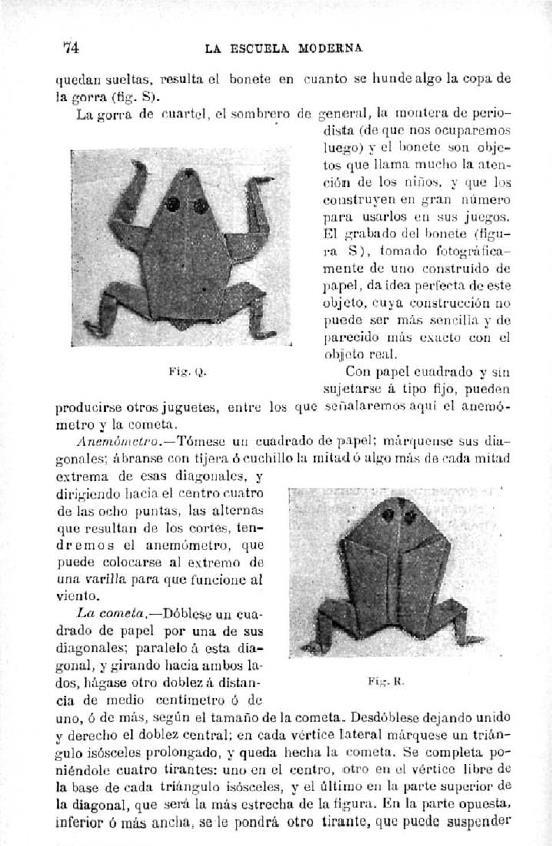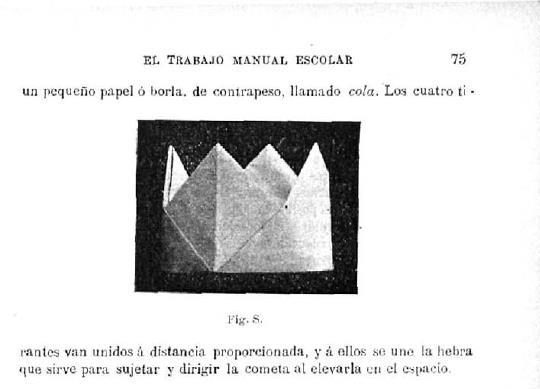| The Public Paperfolding History Project
x |
|||||||
| Article in La Escuela Moderna by Vicente Castro Legua, January 1907 | |||||||
A series of articles about activities using paper and cardboard on the Froebelian model by Vicente Casto Legua were published in the Spanish magazine 'La Escuela Moderna' between December 1906 and November 1909 under the title 'El trabajo manual escolar'. Information pertinent to paperfolding history which appeared in those articles is given below. The articles were subsequently published in a single volume in 1910, in Madrid, also by Los Sucesores de Hernando, under the same title. Information from Juan Gimeno. I have not been able to access a copy of the 1910 book and I do not know if it contains additional material not published in the articles. It is interesting to compare the forms mentioned in these articles with those illustrated in 'Cuestiones de Pedagogía Práctica Medios de Instruir' by the same author which was published in 1893. A summary of the content of those of the original articles which contain material pertinent to paperfolding history and links to the full text of the articles are given below: There was an introduction to the series in issue 189 of December 1906 which included a few crease patterns. I have not included this material on this page. http://hemerotecadigital.bne.es/issue.vm?id=0001312053&search=&lang=es Issue 190 of January 1907 contained two sections: Part 2 - Objects from square paper and Part 3 - Ornamental Rosettes. Part 2 is included in full below. The Ornamental Rosettes are typical Froebelian Forms of Beauty. http://hemerotecadigital.bne.es/issue.vm?id=0001312488&search=&lang=es Issue 191 of February 1907 contained Part 4 - Objects and toys from rectangular paper which included further notes about these and the objects from square paper mentioned in Part 2. http://hemerotecadigital.bne.es/issue.vm?id=0001312903&search=&lang=es Issue 192 of March 1907 - Paper weaving and strip folding - http://hemerotecadigital.bne.es/issue.vm?id=0001313283&search=&lang=es Issue 193 of April 1907 - Polyhedral nets - http://hemerotecadigital.bne.es/issue.vm?id=0001313704&search=&lang=es Issue 195 of June 1907 - The Pentagonal Knot and some material about cutting symmetrical patterns - http://hemerotecadigital.bne.es/issue.vm?id=0001314478&search=&lang=es ********** Issue 190 of January 1907 - Part 2: Objects from square paper 25 designs are listed on the first page of this article. 8 preliminary folds are also given. Not all the designs are made from these preliminary folds and in addition there are discrepancies between the names of the designs given in the initial list and those designs mentioned / explained in the text. Only a few of the designs are illustrated and consequently It is also not possible to identify all the designs with certainty. Notes from Part 3 published in issue 191 of February 1907 have been included here where appropriate. Designs from preliminary fold 1 Preliminary fold 1 is made by folding the square in half diagonally then folding both acute corners onto the third (as if making a Kabuto).
**********. Design 1: Sombrero apuntado (Pointed hat) - The Pyramidal Hat Note that in the text this is also referred to as Sombrero de general (General's hat) Also note that whereas this design is usually folded from a rectangle, here it is folded from a square.
********** Design 2: Lancha - The Paper Boat Note that whereas this design is usually folded from a rectangle, here it is folded from a square.
********** Designs from preliminary fold 2 Preliminary fold 2 is simply a blintzed square.
********** Marcos - Frames With regard to this fold the author notes 'Se derivan de este tipo varias preciosas construcciones, que los ninos llamas marcos, porque en efecto, hechas en papel de tamano regular, sirven para meter en ellas estampas o retratos.Parar obtenerlos, bastr dobla cada une de los cuatro puntas interiores hacia arriba hasta tocar el borde del cuadrado, o rebarsalo algun tanto ...' Roughly, in English 'Several precious constructions are derived from this type, which children call frames, because made from regular-sized paper, they can be used to put pictures or portraits in.To obtain them, simply fold each of the four inner points upwards to touch the edge of the square, or go slightly beyond them ...' See the right hand image below. The left hand picture shows a decorative variation.
********** Designs from preliminary folds 3 / 4 and 5: Preliminary fold 3 is the Windmill Base. The nature of Preliminary Fold 4 is unclear. It is not illustrated. Preliminary fold 5 is the Windmill.
The derivative designs are listed in the text as 'Los dos cuadrados, pajarita, ballena, lancha con vela, lanchas del bou, mesita, candil y estrella del mar.' ********** Design 4. Los dos cuadrados - The two squares Obtained from Preliminary fold 3 by folding the top layers outwards.
********** Design 5: Pajarita - the Cocotte / Pajarita
********** Design 6. Candil y ballena (oil lamp and whale) No illustrations of these designs are given and there are no specific instructions for making them. The candil is almost certainly the Boat with Sail, or a close relative of it. About this design the text says, roughly, 'To complete the lamp add a paper or cardboard tape in the form of a handle or hanger.' There is no clue as to the identity of the ballena design. Since it is linked here to the Boat with Sail it is possible that it is either the Vase or the Monster Fish. ********** Design 7. Barca con vela y barcas del bou. Also called lancha con vela, lanchas del bou in the text. No illustrations of these designs are given but the barcas / lanchas del bou is almost certainly the Double Boat and the barca / lancha con vela the Double Boat with Sail (in which case it is misplaced in this section since it can only be made from a Blintzed Windmill Base or equivalent). ********** Design 8. Estrella de mar y mesa - Starfish and The Table Estrella y mar appears to be a somewhat whimsical name given to the Windmill, despite the design only possessing four arms. Mesa is also called mesita in the text.
********** Designs from Preliminary fold 6
This is a triple blintz fold. The derivative designs are listed in the text as 'La Cruz de Saboya, la pajarita, el carro romano, la caja para mantecadas, el esejo y el barco griego.' Later in the text it also mentions the table and 'las barcas del bou planas'. ********* Design 9. Hornilla (stove) y pajarita - Salt Cellar and Cocotte / Pajarita The Hornilla is not illustrated or mentioned in the text of this article but the notes on this design in Part 4 make it clear that this design is the Salt Cellar.
This says, roughly, 'This is what children call a construction that precedes the pajarita because it bears some resemblance to old stoves. It is also used for a guessing game called Night and Day which is played by inserting the fingers in the folds of the paper making them open and close quickly while another child guesses if it will remain open, saying 'day', or if it will remain closed, saying 'night'.' *** About the pajarita the text simply says, roughly, 'The pajarita can be obtained in the same way as that made from the third preliminary fold.'
********** Design 10. Cruz de Saboya (Cross of Savoy) - The Cross
********** Design 11. Carro romano (Roman chariot) - El Carro
The text mentions the possibility of adding a rectangular awning to this design. ********** Design 12. Cajon con asas y caja para mantecadas (Drawer with handles and box for shortbread) No illustration of this design is given but from the text these boxes appear to be versions of the Junk Box with and without handles. The caja para mantecadas was probably used for cooking shortbread rather than just holding it. The notes about these designs in Part 4 say:
Roughly translated the last sentence says, 'The same box, or slightly modified, serves to contain the mantecada of Astorga, as well as to hold other pastes or sweets, ointments, waxes, vaseline etc and to allow them to be heated on the fire without fear of spilling the contents.' *** The text also says, roughly translated, 'This box, with a single handle or visor, forms a beautiful cap or kepi', a design otherwise known as the Postman's Hat. ********** Design 13. Espejo No illustration of this design is given but from its position between the Junk Box and the Chinese Junk it must be the Looking Glass. ********** Design 14. Barco griego (Greek ship) - The Chinese Junk
********** Designs from preliminary fold 7 This is the Waterbomb base.
The most important designs derived from this preliminary fold are listed in the text as 'Globo, garita, palomita de vuelo y rana'. ********** Design 15. Globo No illustration of this design is given. The instructions in the text are unclear but this design is probably the Waterbomb.
In confirmation of this, the notes in Part 4, roughly translated say, 'Take the opportunity to talk to the children about the weight of liquids, their properties, Mongolfier balloons and the problem of their direction.' ********** Design 16. Garita (sentry box) or tent No illustration of this design is given. The instructions in the text are not clear enough to enable me to identify this design. Unfortunately the notes in Part 4 do not throw any light on this question. ********** Design 17. Estrella de realce
This design is an inside out bird base. ********** Design 18. Palomita di movimiento / Palomita de vuelo - The Flapping Bird Despite being included in this section this design is, of course, not made from the Waterbomb base.
********** Preliminary fold 8:
This preliminary fold is the design known to modern paperfolders as the House. The derivative designs are listed in the text as the tienda de campana or casita de campo, al gorro ruso, la gorra antigua de cuartel and el bonnete. ********** Design 19. Tienda de campana (tent) In the text this design is also called casito de campo (country house) No illustration of this design is given. The instructions in the text are not clear enough to enable me to identify this design. The notes in Part 4 do not clarify the matter. ********** Al gorro ruso (the Russian cap) This design is not included in the initial list but from the description in the text it is probably a version of the Painter's Hat. ********** Design 20. Gorra de cuartel (barracks cap) In the text this design is also called la gorra antigua de cuartel (the old barracks cap) No illustration of this design is given and the instructions in the text are not clear enough to enable me to identify this design. A design of the same name apears in Part 4, but this is not derived from the House. It is possible that the oinclusion of this design here is an error or that the two designs are entirely different to each other. ********** Design 21. Bonete - The Curate's Hat
********** La montera periodista (the journalist's hat) This design is not included in the initial list but is mentioned in passing in the text with the comment 'de que nos ocuparemos luego' (that we will deal with later). The design subsequently appears in Part 4+. ********** Design 22. Limosnero (Almoner) No illustration of this design is given and it is not mentioned in the text.
The notes about this design in Part 4 say, roughly translated, 'This bag, an essential part of the costume of the knights and troubadours of the fourteenth and fifteenth centuries, will give the teacher a chance to tell the children about the beautiful virtue of almsgiving ...' ********** Design 23. Anemometro - The Cut and Fold Windmill No illustration of this design is given but from the text it is undoubtedly the Cut and Fold Windmill. ********** Design 24. Cometa (kite) No illustration of this design is given and it is not clear to me from the instructions how to create it. ********** Design 25. Rana In the text this design appears in the section about preliminary fold 7
********** El Sapo (the toad) In the text this design appears in the section about preliminary fold 7 This design has its own section in the text after the rana, but does not appear in the initial list of designs. El Sapo is also made from the Preliminary Fold not the Waterbomb base.
********** Here, for those who speak Spanish, is the full text of the article. If you can help me resolve any of the issues relating to identification of the designs I will be most grateful.
********** |
|||||||
